Lindisfarne
Whilst staying as far north as Durham, we thought we should take the opportunity to revisit Holy Island, a place that we had enjoyed exploring 10 years previously.
Within view of Bamburgh Castle and the tidal mud flats of Budle Bay, Holy Island lies at the end of a long causeway.
The island is only accessible from the mainland at low tide, and we found many warnings about the dangers of trying to cross the causeway outside of the designated safe hours. Newspaper articles were placed in strategic places in various shops, showing what had happened to those who ignored the tides and found themselves marooned on the roof of their cars or in the escape boxes’ thoughtfully placed at intervals along the road.
Alongside the modern causeway road, a row of stakes marks the ancient route across to the island that was known as the `Pilgrims Way'. The stakes stand as a reminder that when crossing the causeway, you are following in the footsteps of thousands of pilgrims who made this journey over the last 1300 years. Sir Walter Scott described it thus:
"For with the flow and ebb, its style
Varies from continent to isle;
Dry shood o'er sands, twice every day,
The pilgrims to the shrine find way;
Twice every day the waves efface
Of staves and sandelled feet the trace."
Holy Island is still home to many residents, who pursue traditional occupations such as farming and fishing. It is also a popular torurist destination, with B&Bs and shops also plentiful. One of the first things we noticed though, was that the villagers were ready for Guy Fawkes Night or Bonfire Night, with an enormous bonfire piled up in readiness for the 5th November.
This annual celebrationcommemorates the foiling of the Gunpowder Plot of the 5th of November 1605, in which a number of conspirators, including Guy Fawkes, attempted to blow up the Houses of Parliament in London.
We set out first for Lindisfarne Castle, with a number of stops along the way to observe the birdlife, which was quite plentiful. Oyster catchers, eider ducks, a number of varieties of seagulls and other water birds were in evidence at a number of places along the mudflats and beaches.
Lindisfarne Castle is one of Elizabeth’s favourite English castles. Perched high on a cliff above the north sea, it seems to symbolise an indomitable fortress, exposed as it is to the ravages of wind and sea salt. Originally built as an Elizabethan fort around 1570 (it guarded the harbour against raids from Scotland and remained as a garrison until Victorian times), it was later converted in 1901 by Edward Hudson into an elegant Edwardian home.
Hudson commissioned Sir Edwin Lutyens to convert the fort into a holiday home, and the National Trust maintains the castle in this style. The tiny doorways though, act as a constant reminder of its Tudor origins. Unfortunately, we had arrived a little late in the season, and to our disappointment, the castle was shut. We had visited it 10 years previously, so the description dates from this time!
Some distance from the castle is a walled garden, which was originally built as the garrison’s vegetable garden. We did go to inspect this, and read the information board.
At the time the castle was converted to an Edwardian holiday home, the garden was also redesigned by Gertrude Jekyll. The National Trust restored it to Jekyll’s original design between 2002-6. Around both castle and garden, cold-hardened sheep graze peacefully, their woolly fleece obviously acting as insulation against the freezing winds.
Lindisfarne Priory is coinsidered to be one of the most important centres of early Christianity in Anglo-Saxon England. It was founded by St Aidan in 635 CE, but its most famous inhabitant was St Cuthbert, who lived here as a monk.
It was not always plain sailing for the monks though. Viking raids eventually forced the monks to abandon their priory in 875. The description of the first Viking raid in 793 CE, in the Anglo-Saxon Chronicles, is worth repeating:
" 793. In this year terrible portents appeared over Northumbria, which sorely affrighted the inhabitants: there were exceptional flashes of lightning, and fiery dragons were seen flying through the air. A great famine followed hard upon these signs; and a little later in that same year, on the 8th June, the harrying of the heathen miserably destroyed God's church by rapine and slaughter. "
When eventually the monks of Lindisfarne fled their priory for the last time, they took with them the body of Cuthbert, as the dying wishes of the saint stated that "....if necessity compels you to chose between one of two evils, I would much rather you take my bones from their tomb and carry them away with you to whatever place of rest God may decree, rather than consent to iniquity and put your necks under the yokes of schismatics."
After many years, the monks eventually settled at Durham, where St Cuthbert's body remains to this day. A wooden sculpture in the church at Lindisfarne commemorates this event.
The church is still an active parish, and featured some unusual features in addition to the coffin-carrying sculptured monks. The font cover was decorated with a small child receiving the holy spirit in the form of a dove, an evocative symbol of baptism.
We also found a banner of St Margaret of Scotland. This was significant as Margaret was one of Elizabeth’s ancestors, and was the wife of Malcolm III "Longneck" (b.1031) who was King of Scotland from 1058–1093. For her charity and good deeds, Margaret was subsequently canonised by the Pope in 1250. She is Elizabeth’s 24th great grandmother – and I am sure all of you reading this (and noting the similarities between the two in the photo) would no doubt agree that Elizabeth is indeed a model of this saintly heritage!

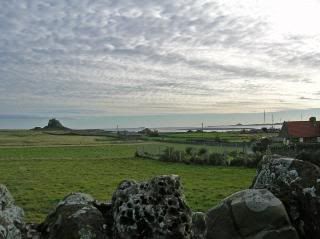
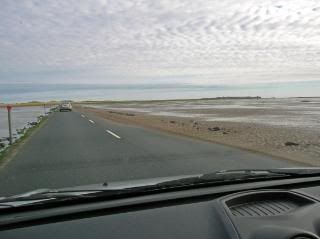

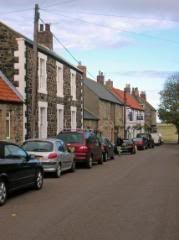
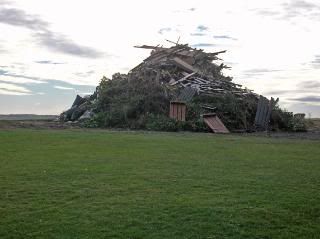
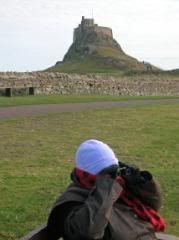
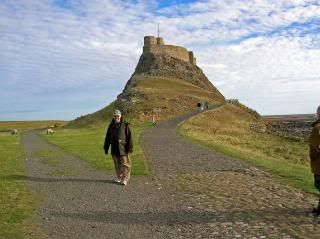
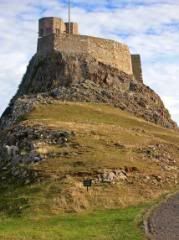
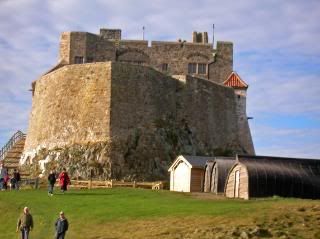

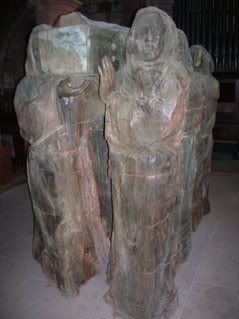
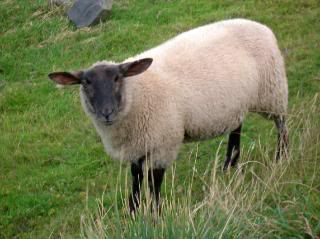
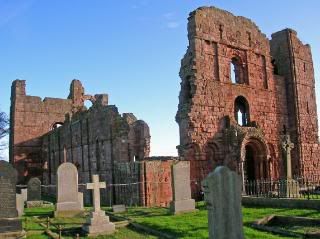
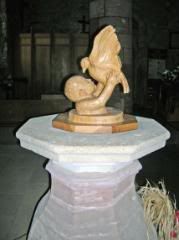
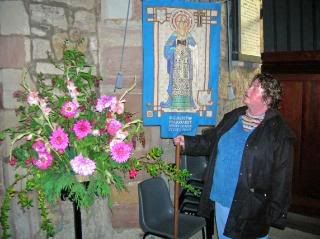

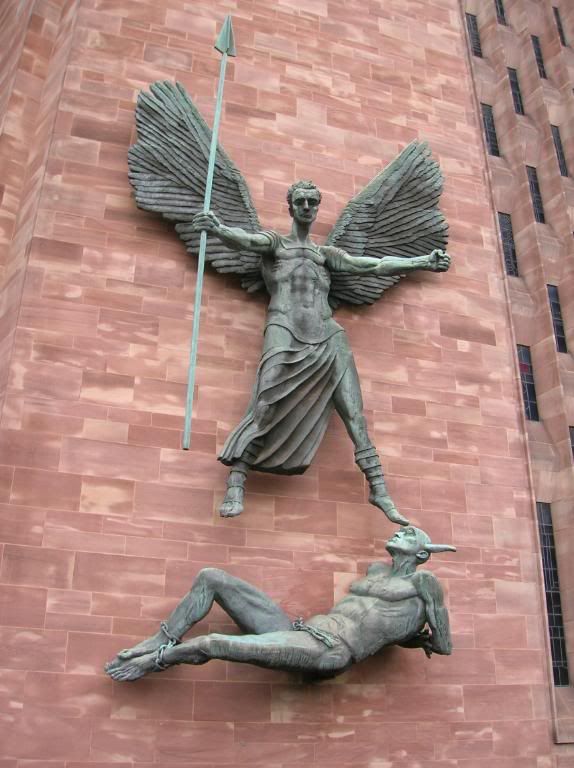

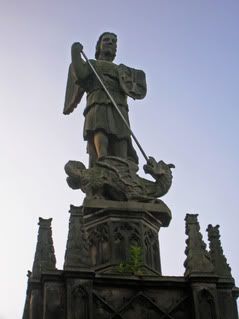
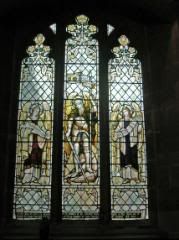
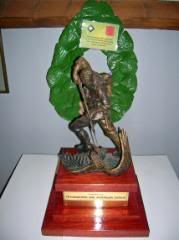


3 comments:
What a fabulous castle!!! Only a pity it was closed....
I have discovered a lot of new things in your posts. I'm glas there are still people who write interesting things.
I will certainly recommend this post to my friends as I am sure they will appreciate it.
Post a Comment